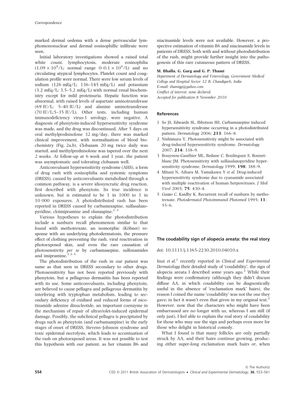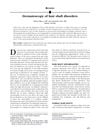The Coudability Sign of Alopecia Areata: The Real Story
March 2011
in “
Clinical and experimental dermatology
”

TLDR The document concludes that anticonvulsants like phenytoin may cause skin reactions by affecting tryptophan metabolism and suggests researching vitamin levels in patients with drug reactions.
The document discusses a case of phenytoin-induced hypersensitivity syndrome (AHS), a severe drug reaction, in a patient who presented with symptoms including a photodistributed rash. The patient had abnormal blood biochemistry and organ function tests, which normalized after discontinuation of phenytoin and treatment with methylprednisolone. The authors suggest that anticonvulsants like phenytoin may cause a pellagrous dermatitis by interfering with tryptophan metabolism, which could explain the photodistribution of the rash in DRESS. They propose that future research should investigate the levels of vitamin B6 and niacinamide in patients with DRESS to further understand the pathogenesis of this condition. Additionally, the document includes a personal anecdote from S. Shuster about the historical origin of the term "coudability," a sign of alopecia areata, which was coined as a tribute to students involved in a historical hoax. The document also briefly mentions a case of schwannomatosis presenting with large subcutaneous and retroperitoneal tumors.

